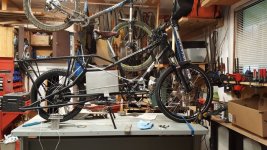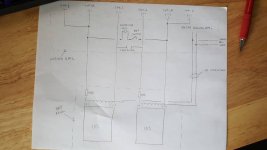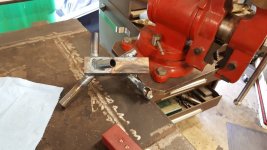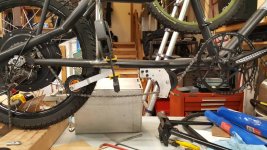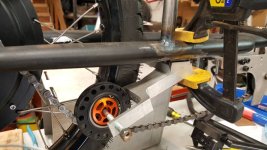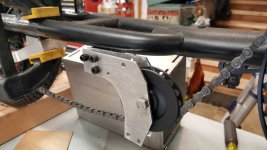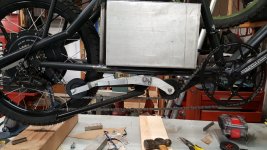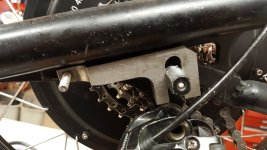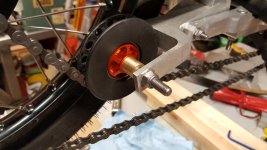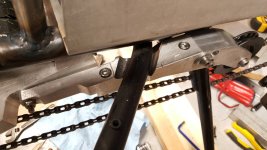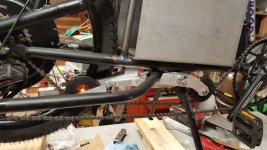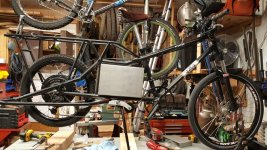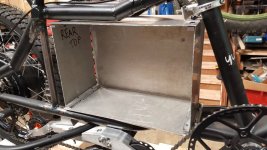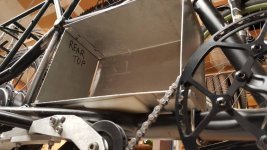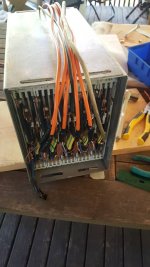mechanix said:
Fast Mode (ludicrous speed?): all 20 cells are wired in series, and a contactor is turned on to turn on the controller. (range should be around 60 or 70mi with a cruising speed of just over 36mph)
Slow Mode: (2) 10s packs in parallel to half the voltage and double the AH (range is calculated to be ~200mi with this setup at 21mph cruising speed)
You get the same range no matter which way you wire them, because you get the same Wh total. (assuming that in neither mode are you exceeding the C-rate capability of the cells, so they don't sag much in voltage and waste power as heat).
The difference is in how you use that power. If you go faster, it'll use more power to counter the air resistance. If you accelerate faster, especially with more weight, and do that more often, you'll use more power.
As long as you can control your throttle hand, you have no need to switch the batteries themselves around, which has a bunch of disadvantages and not really any advantages I can think of that aren't better done in some other way.
--more wiring to have something go wrong with
--more resistance and more inductance in the wiring, which reduce the performance of the system
--more contact resistance from the switches (though you'd have at least half the same resistance if you have a switch at all, like for power cutoff)
--a single point of failure that will end a ride (or prevent one) if the switch fails (just one bad contact makes the whole thing fail)
--the controller must be able to operate on a VERY wide voltage range, and it won't be able to have an LVC to help protect your pack, at least not in the "ludicrous speed" mode. (you'll have to depend on your BMS to shutdown based on cell-level LVC and that means running cells *really* low before that happens, which is harder on them, as many BMS have really low LVCs--since you don't want to use a BMS, it means you have NO pack protection at all).
--Or else you'll have to have two controllers for each motor, wired in parallel, with switches on their phase and battery wires to disconnect or connect them, ganged together with the battery voltage switch. (and this adds even more performance-degrading resistance/inductance and more complex wiring, more stuff to fail).
--Switches to do what you want at the current and voltage you're after are large and can be expensive. Sometimes you can gang multiple singlepole switches to create one that has enough poles, which will probably be (a lot) cheaper, but it might be physically larger when you're done, and there's a potential for timing differences due to teh ganging that cause make-before-break problems (whereas you need them all to be break-before-make to prevent shorts and fires).
--If you get a switch not rated for the peak DC voltage, there's the chance that when you switch modes (especially under any load, as unlikely as that is to happen) it'll continue arcing across the contacts and fail to shutoff, never breaking part or all of the previous connection, and then as the switch moves to make the next connection, it's now shorting across part or all of the pack, and you now have a fire as the wires and switch become extremely low resistance heaters.
--I've probably forgotten other disadvantages....
If you can't control your throttle hand or have some other reason to have a lower-speed mode, it's easy enough to setup something to limit speed when you don't want to be able to go fast, either in the controller with a 3-speed switch and programming it to whatever you prefer, or using osmething like the Cycle Analyst from Grin to do this for you.
Even a simple physical stop on the throttle, like a pin you can insert or a mechanical cam you can rotate into place, to prevent it going any further up than halfway (or wherever) for the lower-speed-limit mode, but when disengaged allows full throttle for ludicrous mode.
Eliminating the switch in voltage also eliminates the need for a "charging" position in the switch, too, so you can just have an "off" switch, which only needs to disconnect either positive or negative but not both (unless you just really want to). It's a LOT easier to find a suitable single-pole single-throw switch of a size you can fit on the bike and a cost you can fit in your wallet.

For charging, you can simply use two 10s balancing chargers, and plug one into the "top half" of the pack, and the other into the "bottom half" of the pack. As long as they are isolated, this will work fine. If they are not isolated, then put your "off" switch *between* teh two halves of the pack, so charging is done only when in "off" mode, and then there's nothing to short between halves.
